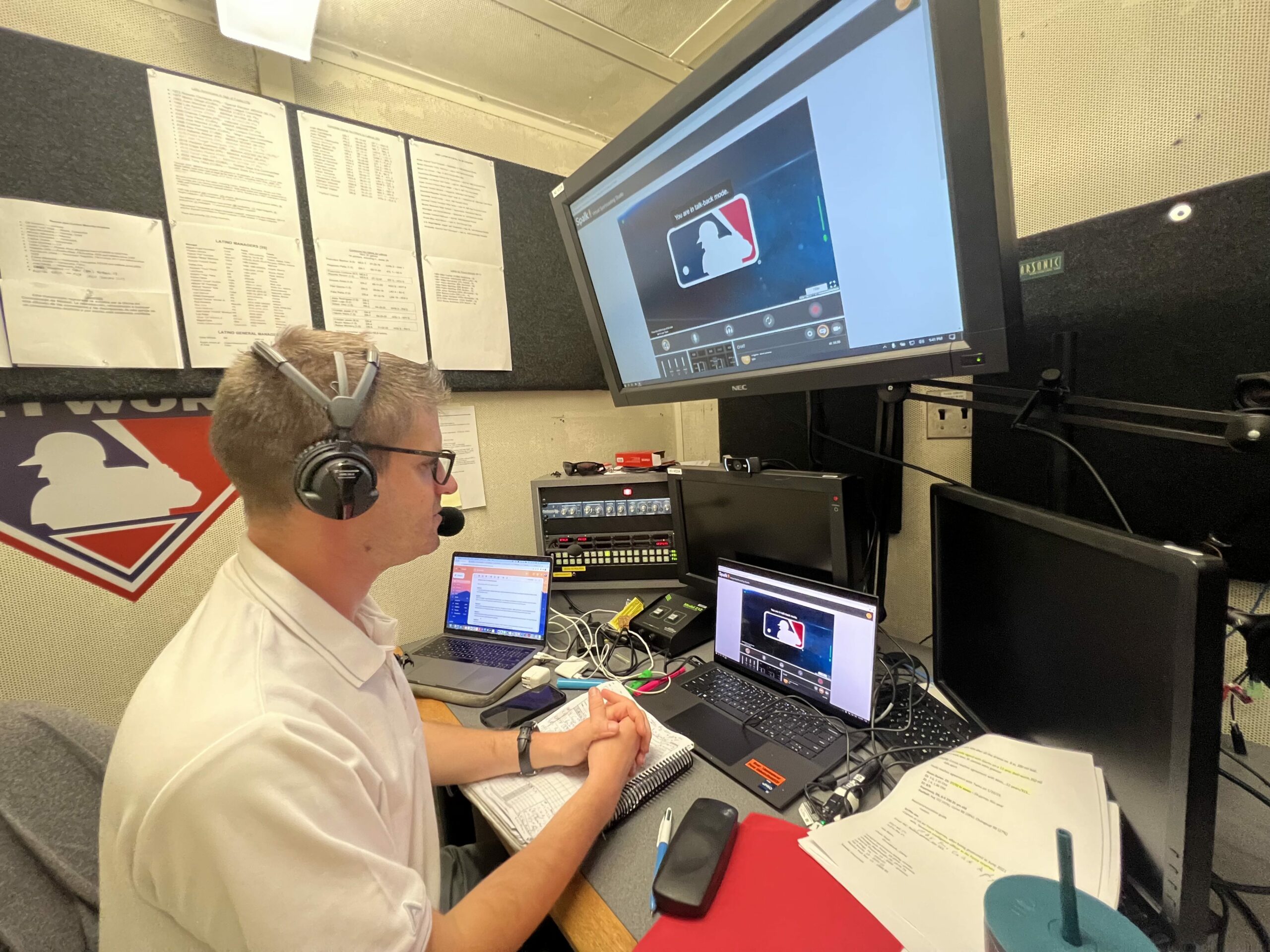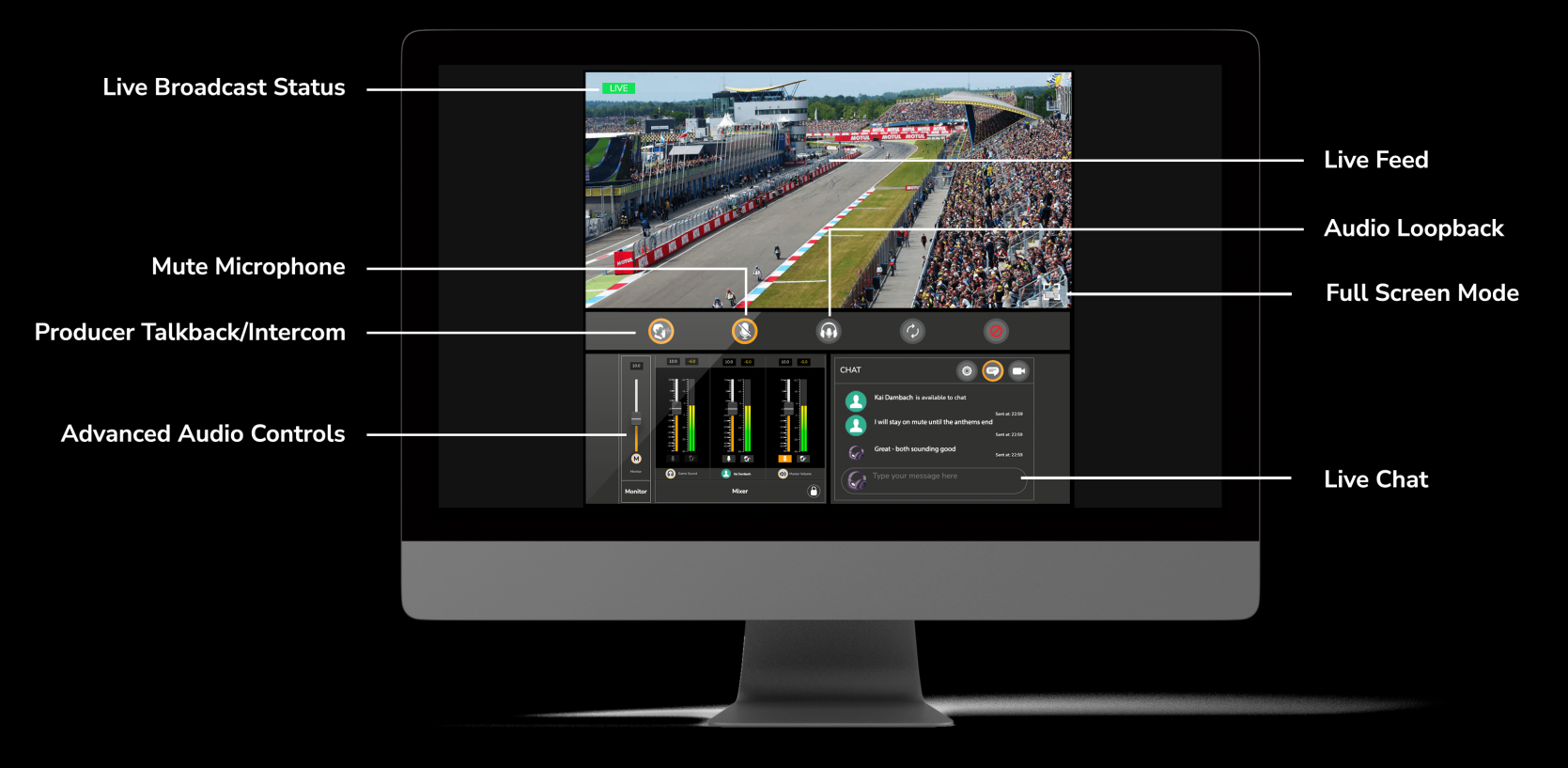SVG Sit-Down: Spalk Chief Commercial Officer Tom Read on the Reality of Remote Commentary
It’s not just about reducing costs
Story Highlights
The question isn’t why would a sports production use remote (or virtual) commentary? It’s why wouldn’t it? Although no one would expect a top Tier 1 event to use remote commentary, the concept promises key benefits to a vast range of sports events. The term virtual commentary can conjure up images of an AI sports announcer; remote commentary is the more exact term. We all know what it means, but we don’t all realize that it can provide more than just having the announcer offsite.
Tom Read, chief commercial officer, Spalk, sat down with SVG to discuss the known and unknown benefits that remote commentary brings to a production.

Spalk’s Tom Read: “Commentary is the most criticized and polarizing aspect, so you need to balance the business sense versus the number-one thing that audiences expect.”
I’ll ask the question that shouldn’t need to be asked: why remote commentary?
It’s more than just not having to bring commentators to an event, which is a big cost saving of around 80% compared with having them onsite. But that’s just the first — and most obvious — of four benefits. Second, remote commentary opens a production up to a much larger talent pool. Third, a production gets more customization, such as multiple language feeds including specific dialects. Finally, there’s the sheer flexibility that remote commentary can provide: more events and commentary at scale.
What kind of production is remote commentary for?
Anyone with a production budget for commentary will eventually have a use for going remote. That includes major sports events that would still have the main language commentator in the venue. However, for a Tier 1 broadcast that’s going multilingual — like NFL International — why do you need to have those commentators in the venue? Regardless of the secondary languages, the cost saving in having a Tier 1 league utilize remote commentary for overseas or other countries is huge. Tier 2 and below, it’s a similar theme: cost saving. There’s no T&E. “Home” commentators can be at the venue, but you don’t need the “away” commentators there. They can do their “home” from home.
Give us an example of how this works in the real world.
Sports-media company Infront has the international media rights for the FIS [International Ski and Snowboard Federation] for broadcast into the U.S. With the majority of events taking place in Europe, it’s not financially logical to send U.S. commentators to European venues every week. So we contract the commentator and serve as a full-service commentary-production house, managing the talent, the actual match commentary, and the technical background.
For the client and the talent, we’re a marketplace, not an agency. We always present options to our clients: “Here’s the best five or six commentators for cross-country skiing.” Then the client picks who to vet. That way, the client can make an informed decision.
You mention handling the talent, and you’re known mostly for your Virtual Commentary Studio. Explain handling the technical issues.
We have a 24/7-staffed control suite that ensures that everything technical with regards to remote commentary works the way it’s expected to. It typically takes less than an hour to map signal workflows. We make it very easy for our clients.
I have to ask, what about AI?
We’re being asked the most about where AI plays into remote commentary. AI is the hottest topic in sports and media, so we’re not surprised by this.
There is a place for AI in remote commentary, but where it sits is up for discussion. It can be a powerful tool for amateur or high school sports. As costs come down, we’re exploring that, as well as leaning into translations for conferences and government use, where five or six languages are the norm.
But there’s one major problem with AI right now: it doesn’t give listeners that raw emotion that human commentary is known for. It’s something on the horizon for things like highlights translation. Commentary is the most criticized and polarizing aspect for an audience, so you need to balance the business sense for cost-savings versus the number-one thing that audiences expect, because front-facing commentary is part of the production to the audience.
I do see immediate applications for AI as part of an existing production as a valuable tool for a researcher or producer to send real-time info to the talent.
How do Spalk and its clients connect?
From the customer side, we’re lucky that we find ourselves in conversations that are more around problem-solving, especially at SVG events. There will be an issue where media X needs to be delivered to broadcaster Y. Plus, people come to us for talent for a specific sport in a specific language. Our relationships are as problem-solvers. We have a robust sales team, but it’s those conversations [that convey] who we are, and people come to us for a problem-solving solution.
This interview has been edited for length and clarity.


